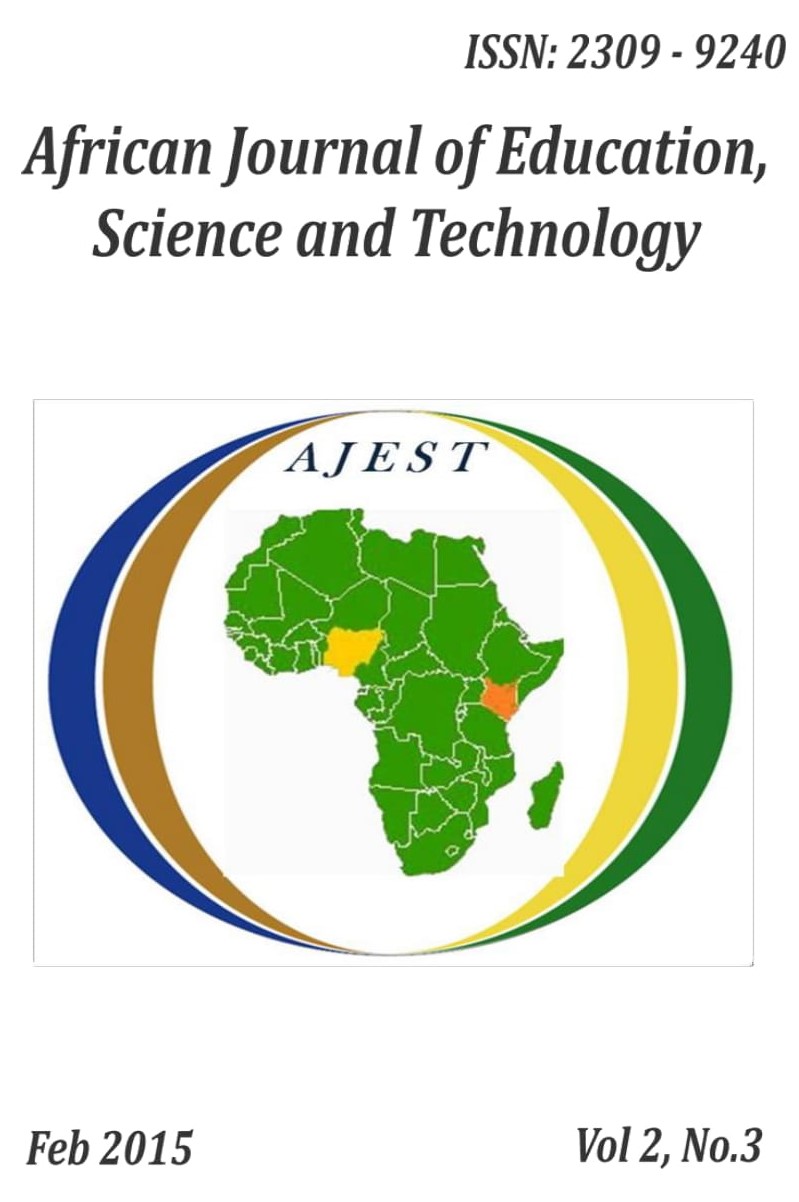The Effects of Suspended Particles on Opercula Beats and Cough Rates in Oreochromis niloticus (Bangkok Strain)
##article.abstract##
A study on the effects of suspended particles on the opercula beats and cough rates in Oreochromis niloticus was conducted in aquaria tanks using different concentrations of algae, silt and sand particles. Microcytis aeruginosa cultured in the laboratory was used. Silt particles obtained from bottom mud of Airthrey Loch were used while sand particles used were sieved through a series of sieves down to 63μm. Three static 5-litre capacity experimental tanks maintained at 270C and vigorously aerated were set in the laboratory. Acclimatized O.niloticus of 7.50mg mean weight were put in each tank. Concentrations of 50mg/l and 150mg/l of algae and silt and algae and sand were added to experimental tanks. The results showed in 50mg/l of algae and silt mixture both the opercula beats (P<0.000) and cough rates (P<0.000) increased significantly compared to the control. In 50mg/l concentration of algae and sand there was significant increase in opercula beats (P<0.000) and cough rate (P<0.000).Between 50mg/l algae and sand and algae and silt, there was significant increase in opercula beats (P<0.000) and no difference in cough rates (P<0.226) In the 150mg/l concentration of algae and silt, the results showed both the opercula beats (P<0.000) increased significantly and cough rates (P<0.000). The implication of these results in light of breathing and coughing rates in O. niloticus are discussed.
References
Appleby, J. P., &Scarratt, D. J. (1989). Physical effects of suspended solids on marine and estuarine fish and shellfish with special reference to ocean dumping: A literature review. Canadian Technical Report of Fisheries and Aquatic Sciences No. 1681.
Birtwell, I.K., Hartman, G.F., Anderson, B., McLeay, D.J., & Malick, J.G. (1984). A brief Investigation of Arctic Grayling (Thymallus arcticus) and Aquatic Invertebrates in the Minto Creek Drainage, Mayo, Yukon Territory: An Area Subjected to Placer Mining. Canadian Technical Report of Fisheries and Aquatic Sciences 1287.
Briggs, M.R.P. (1985). The structure and function of Tilapiine microbranchiospine with special reference to filter feeding. M.sc Thesis, Institute of Aquaculture, University of Stirling.
Bruton, M. N. (1985). The effects of suspensoids on fish. Hydrobiologia, 125, 221-241.
DeVore, P.W., Brooke, L.T., & Swenson, W.A. (1980). The Effects of Red Clay Turbidity and Sedimentation on Aquatic Life in the Nemadji River System. Impacts of Nonpoint Pollution Control on Western Lake Superior. S.C. Andrews, R.G. Christensen, and C.D. Wilson. Washington D.C., U.S. Environmental Protection Agency, EPA Report 905/9-79-002-B,1980.
Doan, K. H. (1941). Relation of sauger catch to turbidity in Lake Erie. Ohio J. Science, 41(6), 449-452.
Gregory, R. S. & Northcote, T. G. (1993). Surface, planktonic and benthic foraging by juvenile Chinook salmon, Oncorhynchus tshawytscha, in turbid laboratory conditions. Canadian J. Fisheries Aquatic Sciences, 50, 233-240.
Grobbelaar, J.V. (1983). Availability of algae of N and P absorbed on suspended solids in turbid waters of the Amazon River Arch. Hybrobiol, 96, 302 – 316.
Havens, C.A.S., & Moll, R. (1991). Fish induced Sediment resuspension. Effects on Phytoplankton biomass and community structure in a shallow hypereutrophic lake. J. Plankton Res. 13(6), 1163 – 1171.
Herbert, D. W. M., & Merkens, J. C. (1961). The effect of suspended mineral solids on the survival of trout.
International J. Air and Water Pollution, 5, 46-55.
Horkel, J. D., & Pearson, W. D. (1976). Effects of turbidity on ventilation rates and oxygen consumption of green sunfish, Lepomis cyanellus. Transactions American Fisheries Society, 105(1), 107-113.
McLeay, D. J., Ennis, G. L. Birtwell, I. K., & Hartman, G. F. (1984). Effects on Arctic grayling, Thymallus arcticus, of prolonged exposure to Yukon placer mining sediment: A laboratory study. Canadian Technical Report of Fisheries and Aquatic Sciences No. 1241, 96 p.
McNally, J., (1988). The effects of suspended silt and sand particles on growth of the phytoplankton feeding tilapia, sarotherodongalilaeus, M.sc Thesis Institute of Aquaculture, University of Stirling.
Newcombe, C. P. (1994a). Suspended sediments in aquatic ecosystems: Ill effects as a function of concentration and duration of exposure. Habitat Protection Branch, British Columbia Ministry of Environment, Lands and Parks, Victoria, British Columbia. 298 p.
Newcombe, C.P., & J.O.T. Jensen, (1996). Channel Suspended Sediment and Fisheries. A Synthesis for Quantitative Assessment of Risk and Impact. North American Fisheries Management 16, 693-727.
Okorie, O.O (1975). Environmental Constraints to Aquaculture development in Africa. FAO/CIFA Symp. On Aquaculture in Africa, Accra, Ghana CIFA/7S/SE:1.
Petticord, R. K., (1976). Biological impacts of suspensions of dredged material. p. 605-615 In Proceedings of Dredging Environmental Effects and Technology.
Phillips, R. W., (1971). Effects of sediment on the gravel environment and fish production. In J.K. Krygier and
J.D. Hall [eds.], Forest Land Uses and the Stream Environment. p. 64-74 Corvallis, Oregon: Oregon State University
Redding, J.M., Schreck, C.B., & Everest, F.H. (1987). Physiological Effects on Coho Salmon and Steelhead of Exposure to Suspended Solids. Transactions of the American Fisheries Society 116,737-744
Riise, J.C., & Roos, N. (1997). Benthic Metabolism and the effects of bioturbation in a fertilized polyculture fish pond in northeast Thailand. Aquaculture, 150, 45-62.
Ritchie, J. C. (1972). Sediment, fish and fish habitat. J. Soil and Water Conservation, 27(3), 124-125. Scannell, P.O. (1988). Effects of Elevated Sediment Levels from Placer Mining on Survival and Behavior of
Immature Arctic Grayling. Alaska Cooperative Fisheries Unit, University of Alaska, Unit
Contribution 27.
Servize, J.A., & Martens, D.W (1992). Sublethal Responses of Coho Salmon (Oncorhynchus kisutch) to Suspended Sediments. Canadian Journal of Fisheries and Aquatic Sciences 49,1389-1395.


